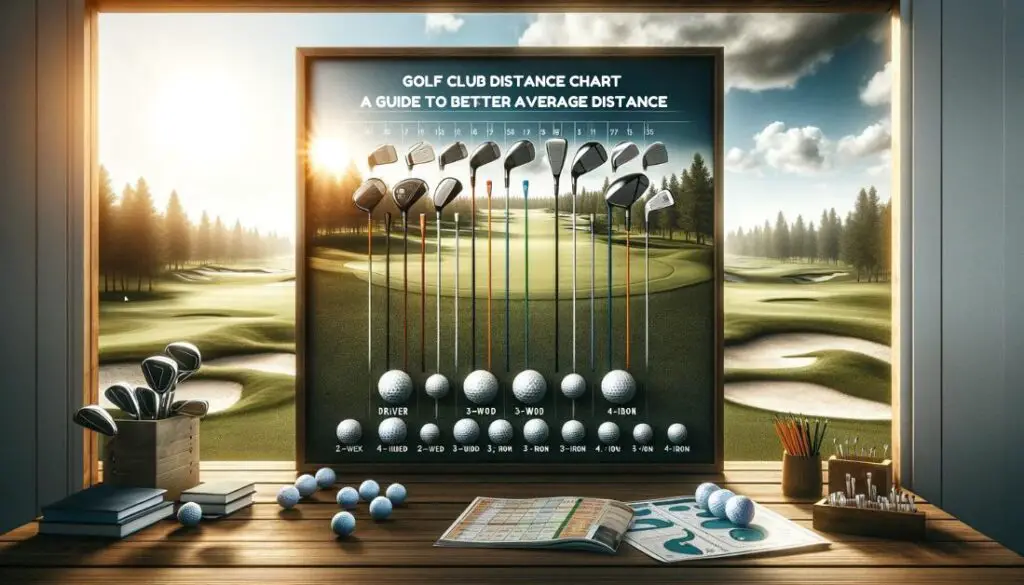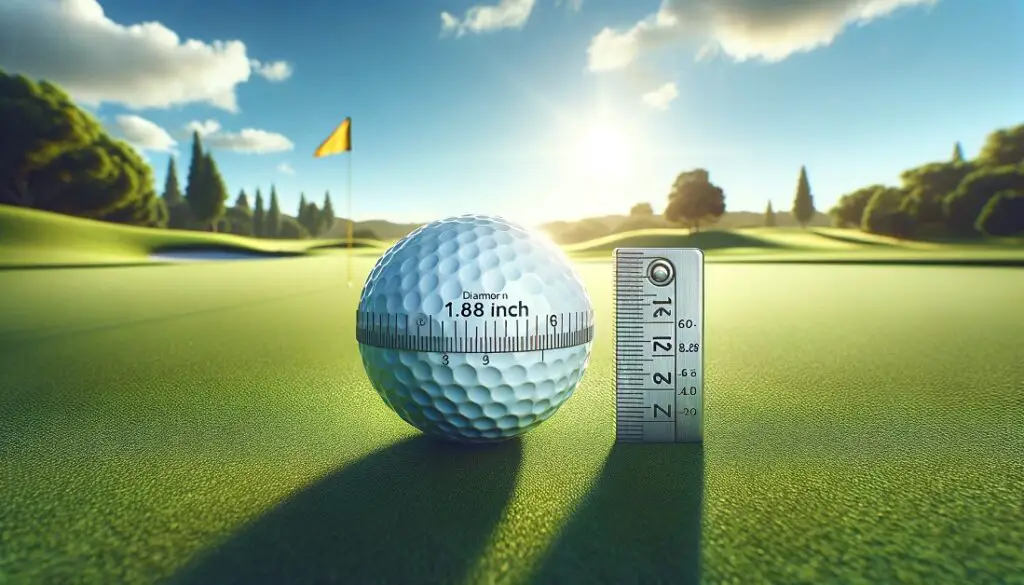Have you ever been on the fairway with your club in hand and completely unsure which one to use to make the ideal shot? From beginners to expert players, many golfers often wonder whether they’re making the most of their swing. About 26% of golfers consistently hit drives farther than 200 yards, did you know that? This is where a golf club distance chart comes in useful, turning estimation into accuracy.
You may improve your golf game and increase the confidence and efficacy of each swing by learning how to use and understand these charts. Ready to take away all guessing from your game and reduce the number of strokes off your score? Together, we will explore the world of golf club distance charts and help you achieve your greatest playing potential.
Table of Contents
ToggleWhat Is Golf Club Distance Chart?
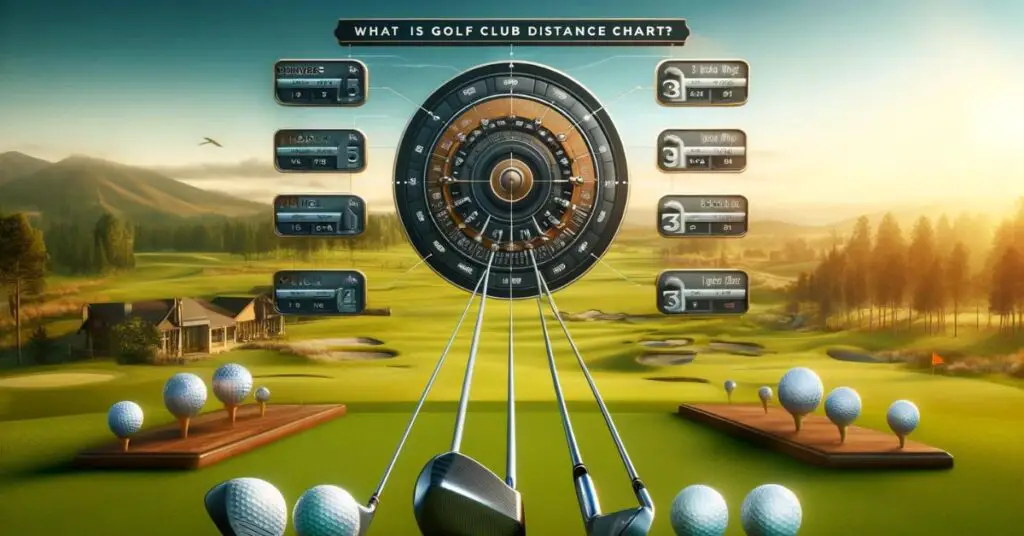
Golfers can learn how far they can normally hit each club in their golf bag with the use of an in-depth manual called a golf club distance chart. To increase shot consistency and accuracy, this chart for golf club distances. It provides a reference point for players of various skill levels and swing speeds and contains average distance for each golf club, from the driver to the putter.
The chart’s distances are based on average golfer performance and standard conditions. For example, a amateur golfer may hit a driver of around 230 yards, while a 7-iron might average golf club distances about 140 yards. These average club distances can vary based on smash factors like swing speed, weather conditions, and individual skill levels.=
A Golf Clubs Distance Chart can help players make better judgments while they’re out on the course. They can utilize the chart to choose the appropriate club rather than doing it, which will increase their chances of landing the ball where they want it. A golf distance chart can be a game-changer when used correctly, resulting in lower scores and a more enjoyable round of golf.
How To Read A Golf Club Distance Chart
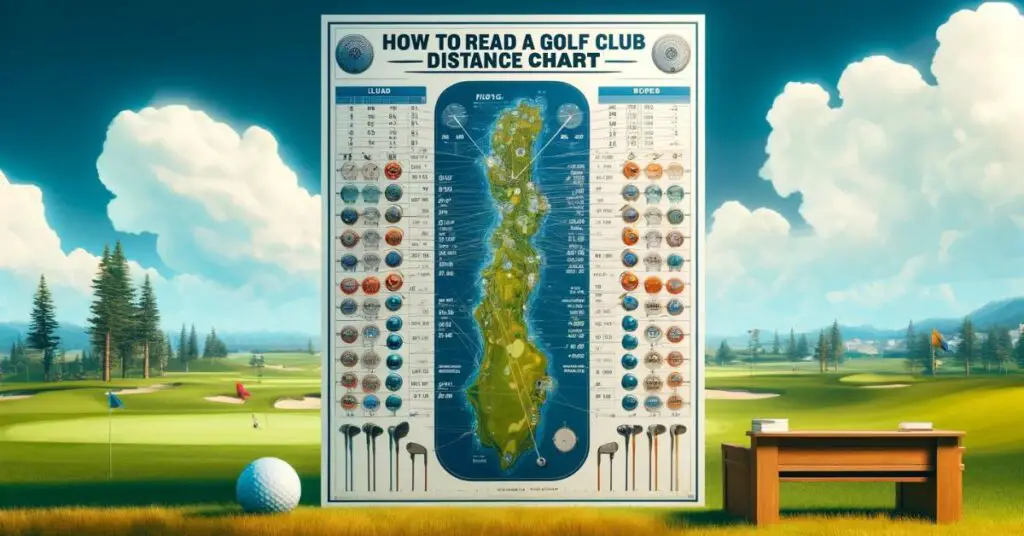
Once you understand the golf clubs range chart layout and purpose it becomes easy to read. The different kinds of golf clubs are commonly listed on one axis in this chart, going from drivers and woods to irons and wedges, and finally putters. The average distance per golf club can hit under ideal conditions is displayed on the other axis.
- Identify the Club Types: It clearly shows that the longest clubs, which are referred to as drivers, are placed at the top end of the chart, then come the shortest (putters). Familiarize yourself with different types of clubs available: Iron, hybrids, putters, wedges, and woods are the categories that are available in golf courses also.
- Average Distance Metrics: There will be a comparable distance range for every type of Irons. For example, a 7-iron could display 130–160 yards, whereas a driver might show 230–270 yards on average. These distances are intended to serve as a basic guideline and are typically based on the performance of an average player on the driving range.
- Adjust for Individual Variations: Keep in mind that these are average golf distances. Depending on your playing conditions, strength, and swing speed, your actual distances may change. Utilize the chart as a guide to golf, and make adjustments in light of your observations and experience over the course.
- Understand the Impact of Swing Speed: Longer distances are typically produced by faster swing speeds. You can customize the data to fit your game by using the separate columns seen in many charts for different swing speeds.
- Consider Environmental Factors: The ball’s travel distance can be dependent on factors like wind, temperature, and altitude. Even if the chart gives you a baseline distance, you should still adjust your choice of club accordingly.
- Practice and Record Your Distances: To determine your average distances with each club, use the chart during your golf practice sessions. Maintain a scorecard so you can create a customized distance chart that matches your playing style.
Accurately learning to understand a average golf club distance chart will help you make better club selections and improve your game performance overall. This tool bridges the gap between knowledge and application, allowing you to play with greater confidence and precision.
Golf Club Distance Chart By Age Group
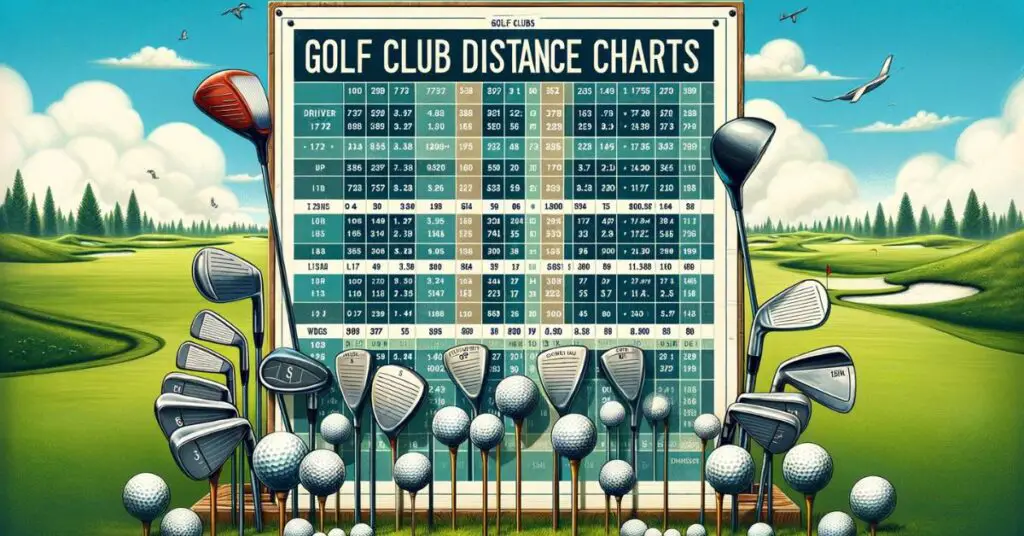
The distance of golf clubs can vary significantly based on a player’s age due to changes in strength, flexibility, and swing speed. By referring to an average distance for golf clubs chart, players can better understand these variances and make more informed decisions on the course.
Age Group | Driver | 3-Wood | 5-Wood | 3-Iron | 4-Iron | 5-Iron | 6-Iron | 7-Iron | 8-Iron | 9-Iron | Pitching Wedge | Sand Wedge | Lob Wedge |
20–30 | 250-300 | 230-270 | 215-240 | 210-230 | 200-220 | 180-205 | 170-195 | 160-180 | 150-170 | 140-155 | 130-150 | 110-130 | 90-110 |
30–40
| 240-290
| 220-260
| 205-235 | 200-220 | 190-210
| 175-200
| 165-190
| 155-175 | 145-165
| 135-150
| 125-145
| 105-125
| 85-105 |
40–50
| 230-280
| 210-250
| 195-225 | 190-210 | 180-200
| 165-190 | 155-180 | 145-165 | 135-155
| 125-145 | 115-135
| 95-115 | 75-95 |
50–60
| 220-270
| 200-240
| 185-215 | 180-200 | 170-190
| 160-180 | 150-170
| 140-160 | 130-150
| 120-140 | 110-130
| 90-110
| 70-90 |
61–70
| 210-260 | 190-230
| 175-205
| 170-190 | 160-180
| 150-170 | 140-160 | 130-150
| 120-140
| 110-130 | 100-120
| 80-100 | 60-80
|
71–80
| 200-250
| 180-220
| 165-195
| 160-180 | 150-170 | 140-160 | 130-150
| 120-140 | 110-130 | 100-120 | 90-110
| 70-90
| 50-70
|
81+ | 190-240
| 170-210
| 155-185 | 150-170
| 140-160
| 130-150 | 120-140
| 110-130
| 100-120 | 90-110 | 80-100
| 60-80
| 40-60 |
Age Group: 20–30
20-30 age golfers often have strong physiques and quick swings, which enable them to hit the ball farther with each club. A 7-iron might go 150–170 yards, but a driver might average 260–300 yards. This age group benefits from leveraging their power they should also concentrate on improving their techniques to increase accuracy and consistency.
Age Group: 30–40
Golfers in their 30s to 40s typically maintain distances that are similar to those in their 20s, while minor declines may start to show up as a result of lifestyle changes or less practice time. With a 7-iron averaging 140–160 yards, drivers can still average 250–290 yards. Maintaining flexibility and fitness might help keep performance on high level.
Age Group: 40–50
Middle-aged golfers, that is golfers in their 40s to 50s may experience a more significant decrease in the overall swing distance as well as the speed. One might hit between 240-280 yards on a driver, and between 135-155 yards with a 7-iron. Thus, players in this age range should focus on physical fitness levels and improving their golf equipment, including using more flexible shafts.
Age Group: 50–60
Due to a decrease in strength and flexibility, further cover less distance are typical in the 50–60 age group. A 7-iron may average 130–150 yards, whereas drivers may average 230–270 yards. Maintaining performance can be eased by placing a priority on proper technique, engaging in regular exercise, or even switching to clubs made for slower swing speeds.
Age Group: 60–70
Drivers often cover 220-260 yards for players 61–70 years old, and 7 irons can go 120–140 yards. To reach their full potential on the course, players in this age group should think about changing their golf gear, such as switching to lighter clubs and more flexible shafts, and keep up their concentration on strength and flexibility training.
Age Group: 70–80
Golfers 70-80 usually see a noticeable decline in distance. A 7-iron could go 110–130 yards, and a driver might average 200–240 yards. Play can be made more enjoyable by making adjustments to equipment and technique, like switching to hybrids from long irons. This will help offset the loss of power.
Age Group: 81 And Above
Players above 80 find it more difficult to maintain their balance at a distance in comparison to the other players. 7-iron is usually a 100–120 yards creation while the drivers can yield an average of 180–220 yards. They can enhance their golfing experience by focusing on comfort and ease of play such as by utilizing clubs with more loft and lighter materials, and by concentrating on short game techniques.
Golf Club Distance Chart By Swing Speed
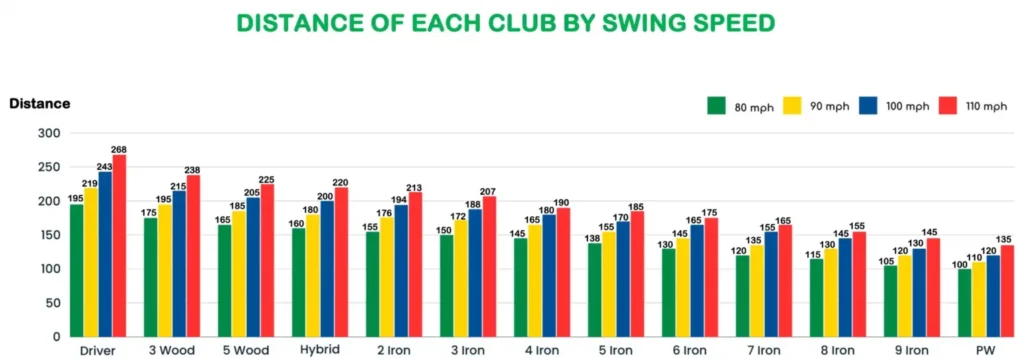
Factors Affecting Golf Club Distances
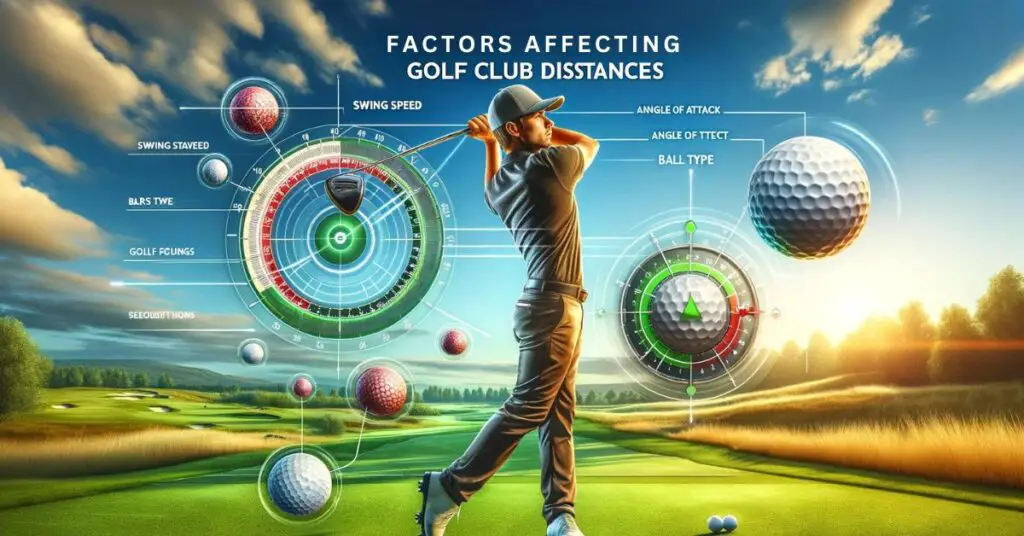
You may maximize your performance and make smarter judgments on the golf course by Understanding the factors that affect golf club distance.
Swing Speed
One of the most important variables affecting how far you can hit the ball is your swing speed. Increased club head speed at interaction from faster swing rates results in a longer shot. Professional golfers frequently swing at speeds above 110 mph, whilst beginner golfer usually swing at 80–100 mph. Longer shots can be achieved by increasing your swing speed through strength training and proper technique, but maintaining control is essential for accuracy.
Angle Of Attack
The angle at which the clubhead strikes the ball is known as the angle of attack. Generally speaking, with a with a positive angle of attack you can increased distance , where the clubhead moves upwards at impact, especially when using the driver. On the other hand, a negative angle of attack—which is common to irons entails applying force when striking the ball with the intention of generating the necessary spin as well as loft. If you take smaller angles of contact then it will improve the combinations of your shots in terms of accuracy and distance.
Ball Type
Correct selection of the golf ball type will help you greatly to achieve a maximum of total distance of the hit. For golf club swing speeds as well as the playing style, golf balls are created with various core materials, covers, and compression types. The balls with low compression should be used because they are quite responsive to slower swings and can maximize ball speed to go the farthest when a player swings them. High-compression balls are ideal for players who want to have faster swing speeds, which provide better control and higher ball speed compared to low spin. By making the right choice of the ball type, you can enhance your distance as well as your overall performance on the course.
Conclusion
In conclusion, Any golfer who wants to improve their game can take advantage from the Golf Club Distance Chart. On the course, It can helps you to understand how far you can hit with each club, taking the guesswork out of your shots and allowing for more informed decisions.
You may play with more confidence and accuracy if you know your average distances, considering factors like swing speed and ball type, and adjusting for age-related changes. This ultimately helps you reduce your golf scores and reach your full potential by providing you with more consistent and enjoyable golfing experiences. For this reason, utilizing a golf club distances chart can significantly improve your performance on the fairway regardless of your level of experience.

With several years of experience in golf, Golf Golz are dedicated to helping golfers elevate their game through innovative training techniques, premium equipment, and expert insights. From mastering your swing to conquering the course, we bring you strategies and tools designed by world-class instructors to help you play your best golf yet.

